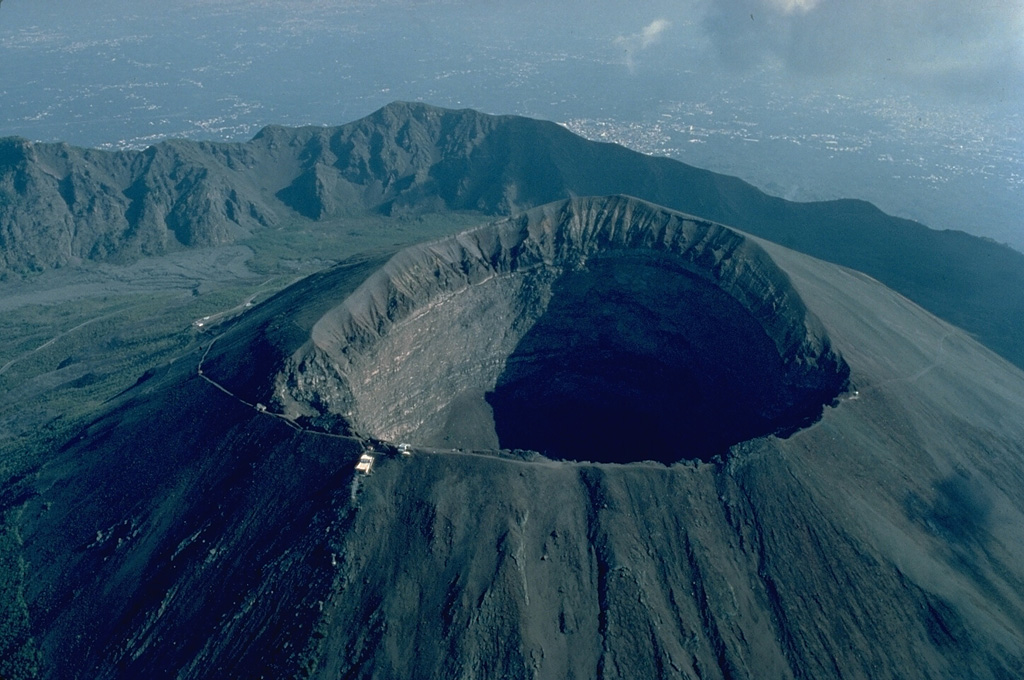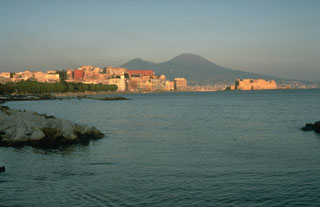Image GVP-00021

Volcanic craters are depressions above a volcanic vent that form as a result of explosive eruptions or collapse. Craters can form at the summit of a volcano or on its flanks. Their sizes and shapes vary widely. Some, like this 600-m wide, 300-m deep crater of Italy's Vesuvius volcano, are large and deep, and have steep-sided walls. Other craters, such as maars and tuff rings produced by powerful explosions involving water-magma interaction, are often much wider than they are deep. Vertical-walled pit craters form by collapse over an eruptive fissure.
Copyrighted photo by Katia and Maurice Krafft, 1982.
Copyrighted image used with permission. All Rights Reserved. Contact photographer for any usage requests.

Vesuvius
